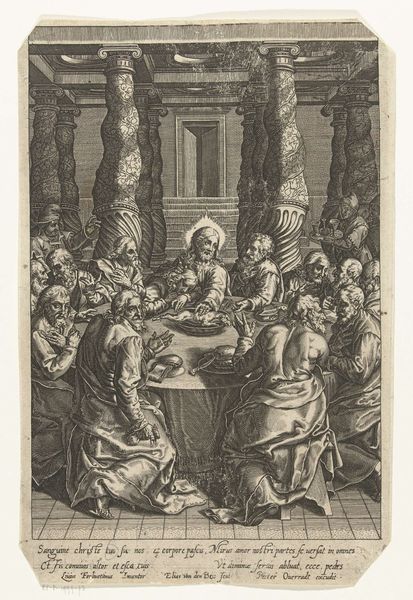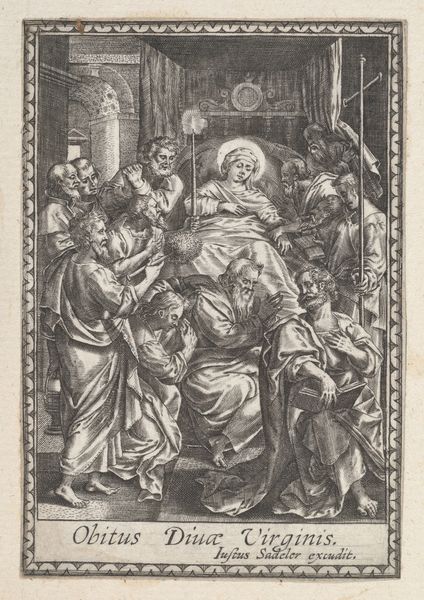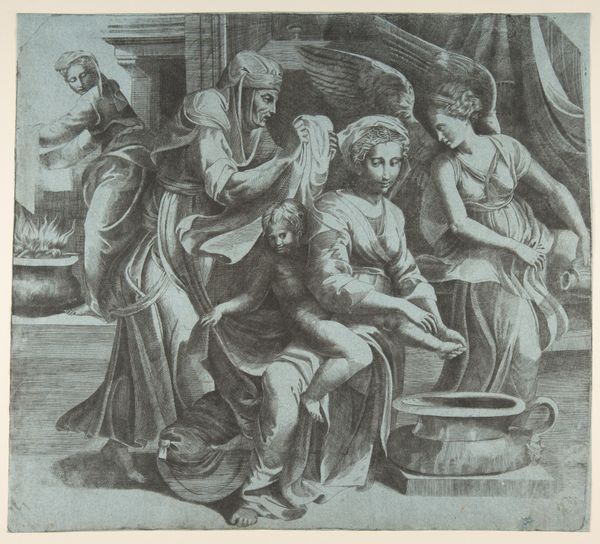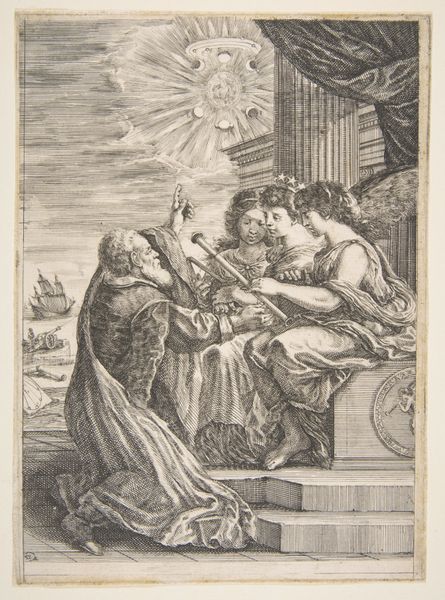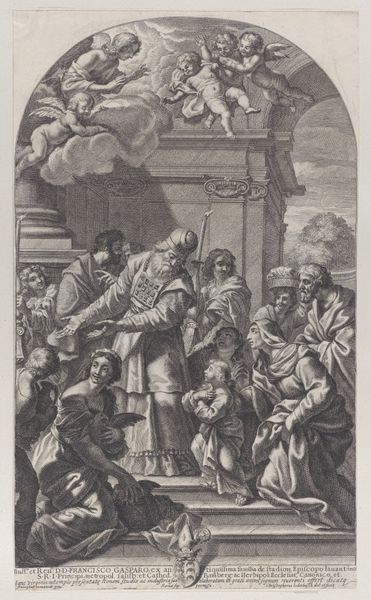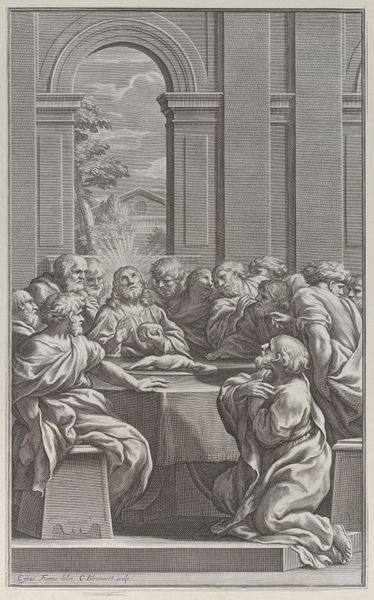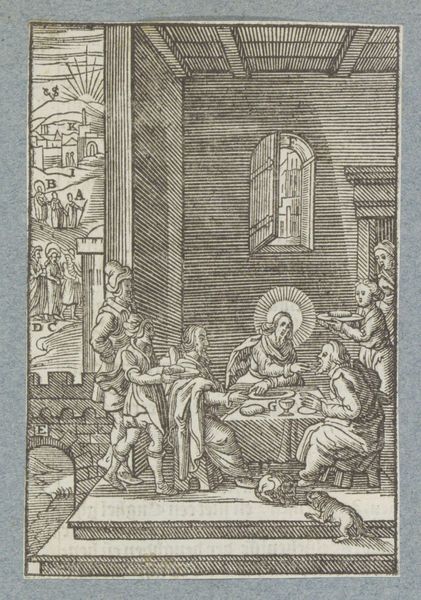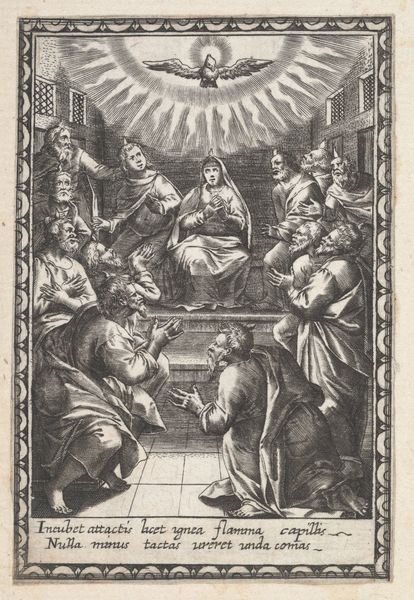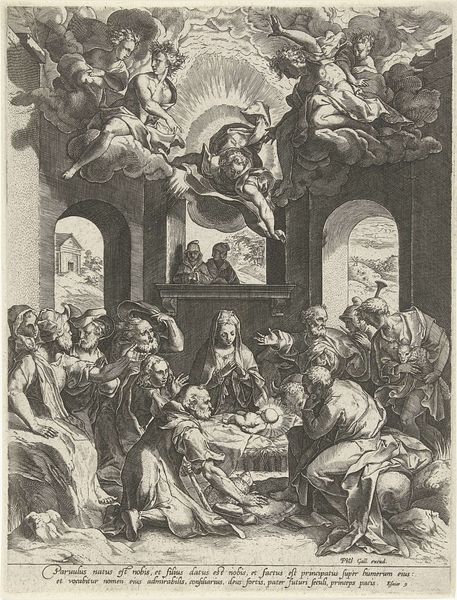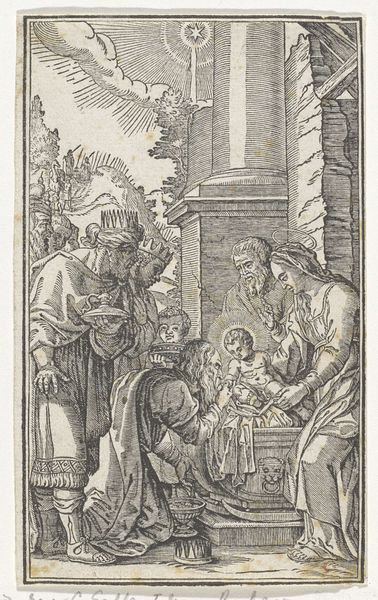
drawing, print, engraving
#
drawing
# print
#
old engraving style
#
mannerism
#
men
#
history-painting
#
engraving
#
christ
Dimensions: Sheet: 3 3/8 × 2 1/4 in. (8.6 × 5.7 cm)
Copyright: Public Domain
Editor: So, this engraving, "Christ Among the Doctors," dates from between 1590 and 1625. It’s striking how the artist, whose identity remains unknown, achieved such detail with just lines. There’s almost a claustrophobic intensity to the scene. What stands out to you? Curator: The interesting thing here is how the printmaking process allows for the mass production and dissemination of images. Consider the labor involved in creating the initial matrix and then pulling multiple impressions. This inherently challenges notions of the unique "aura" of a work of art championed by traditional art history. The act of replication here democratizes the image, making it accessible to a wider audience beyond the elite. It speaks to consumption, doesn't it? Editor: That’s a great point about accessibility! I hadn't considered how printmaking impacts the artwork's social life. I always think about the artistry in creating lines and hatching. Does that minimize the artistry for you? Curator: Not at all! Think about the tools. The engraver used to create the matrix — the burin, the plates themselves, the inks — are the artist’s instruments. How does the manipulation of those materials translate into meaning? The artist isn't only representing a biblical scene, but actively participating in a larger, market-driven system of visual culture. Editor: It’s fascinating to view this anonymous engraving through that material lens, shifting from just the representation of Christ, to thinking of materials and economy, and how it changed artistic creation in society. Curator: Precisely. It invites questions about the division of labor within workshops. Who designed the image? Who executed the engraving? Who sold the prints? All valid approaches to what makes up "art."
Comments
No comments
Be the first to comment and join the conversation on the ultimate creative platform.

